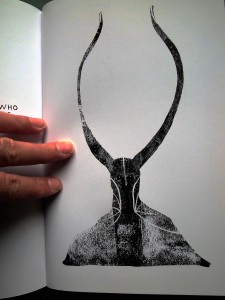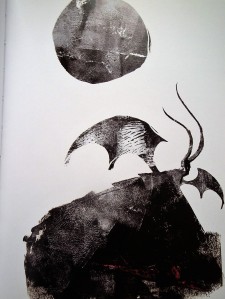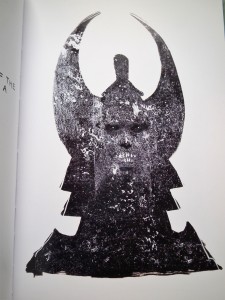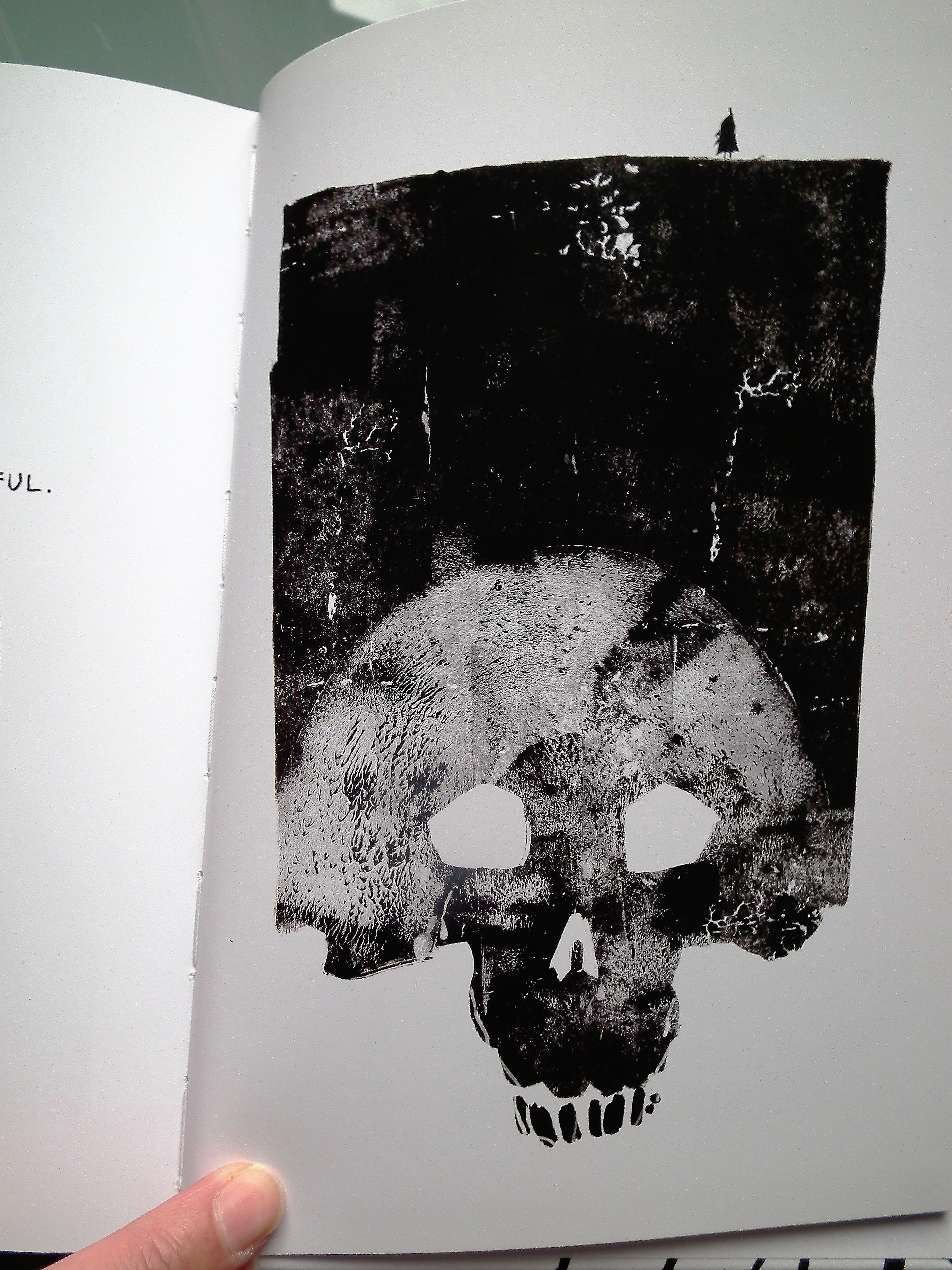 I was delighted when I saw the illustration for my novelette, “Fabulous Beasts”, not just because it’s beautiful but because I recognised Jeffrey Alan Love‘s work from the covers of Simon Ing’s novels in my local bookshop, which were what drew me to pick them up.
I was delighted when I saw the illustration for my novelette, “Fabulous Beasts”, not just because it’s beautiful but because I recognised Jeffrey Alan Love‘s work from the covers of Simon Ing’s novels in my local bookshop, which were what drew me to pick them up.
I’ve been lucky enough to get the man himself to answer some questions.
Priya: I think there’s something very mythical about your work, even when you’re illustrating a contemporary piece. Where does this come from?
Jeffrey: My early childhood was spent in Germany, and I think a large part of the work I do today was seeded with my experiences there – walking through dark, ancient forests, running about crumbling castles pretending to be Robin Hood or King Arthur, seeing Mont Saint-Michel rising up out of the mist as we drove down a coastal road in Normandy. I was (and still am) a voracious reader, and getting to see Stonehenge while reading about the druids, seeing Frankenstein Castle while reading Frankenstein, having memories of being in Greece and Rome while reading about their gods and myths made it so that myth is in a way a very real thing to me, something palpable, a feeling that I have experienced and try to include in my work. A large step towards finding my voice as an artist was deciding to make work that reflected who I was as a child – the sense of mystery and magic in the world, the sense of Other, of Magic, that there is something out there wonderful and unexplainable that cannot be put into words – but perhaps it can be put into a picture.
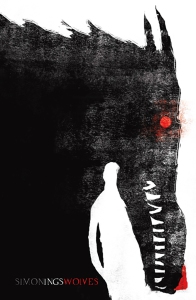
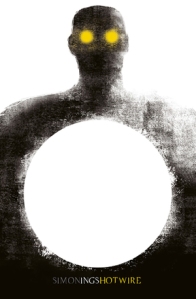
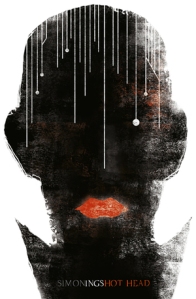
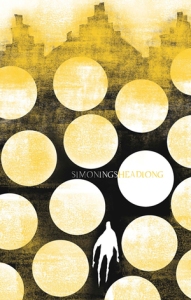
P: Your style is unique- I love the controlled palette and the textures that you use. How did this develop? When I look at your work, it makes me feel that it’s a paper led process but is there a digital element?
J: Thank you for the kind words. The way I work now in large part owed to moving to San Francisco for a year with my wife, and suddenly having to work in a much smaller space. Whatever I could fit on top of my folding table was what I would use, so working mainly with just black and white paint on paper was a way of working simply and comfortably within the restraints of my studio space. Also, for quite a while I had tried to work in a more painterly manner, drawing inspiration from Rembrandt, Van Dyck, and George Inness, but struggled to have the paintings get to where I wanted them to be by the deadlines – it was only when I accepted that Rembrandt & co. could take months or even years to finish a painting, while I felt lucky if I was given longer than 5 days to finish a piece, and that I should embrace the pace of modern illustration instead of fighting it, that I started to develop my current way of working which satisfies my clients needs for short deadlines and my own need to feel artistic fulfillment. Everything I do now is paint and ink on paper, the only digital element is scanning it and erasing all the cat hair that my cats smuggle into my scanner.

P: What’s your method of springboarding from a piece of fiction into creating your own unique vision of what it’s about? What happens if you are commissioned to illustrate a story that you find it hard to connect with?
J: As I said earlier, I’m a voracious reader, and my college degree is actually in English: Fiction Writing, so in some ways I’ve been training my whole life to 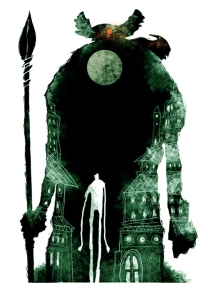 read manuscripts. But the way that works best for me is to just read it through and see what my emotional response is. If something strikes me as I’m reading I’ll make a small doodle in the margins, but mostly I just read it through and see if I feel anything. If I do, the question then becomes how can I make that resonate, how can I make that note or notes that I’m feeling expand, so that the viewer will feel something when looking at my art, and, at first, not having read the story yet, be drawn into it and want to read it, and secondly, having finished the story, have that feeling multiply, to find new meaning and depth in the art from the content and craft of the piece of fiction. Sometimes the images pop immediately into my mind, but often it is just a vague sense of what the elements should be within the picture, and I then think of them as if they are players on the stage – what combination and staging of them will be most effective to create the desired feeling/emotion? You don’t make a piece more tragic by painting “tragic”, you make the story a tragedy by varying the relationships of the elements to each other. If one figure towers over another, that tells a story, that creates a response. If the large figure has a knife, that’s one story. If the smaller figure has the knife, that’s a totally different story. If I’m lost I just ask myself what story I’m trying to tell.
read manuscripts. But the way that works best for me is to just read it through and see what my emotional response is. If something strikes me as I’m reading I’ll make a small doodle in the margins, but mostly I just read it through and see if I feel anything. If I do, the question then becomes how can I make that resonate, how can I make that note or notes that I’m feeling expand, so that the viewer will feel something when looking at my art, and, at first, not having read the story yet, be drawn into it and want to read it, and secondly, having finished the story, have that feeling multiply, to find new meaning and depth in the art from the content and craft of the piece of fiction. Sometimes the images pop immediately into my mind, but often it is just a vague sense of what the elements should be within the picture, and I then think of them as if they are players on the stage – what combination and staging of them will be most effective to create the desired feeling/emotion? You don’t make a piece more tragic by painting “tragic”, you make the story a tragedy by varying the relationships of the elements to each other. If one figure towers over another, that tells a story, that creates a response. If the large figure has a knife, that’s one story. If the smaller figure has the knife, that’s a totally different story. If I’m lost I just ask myself what story I’m trying to tell.
Early in my career I struggled with what to do if I didn’t connect with a job, but I’ve learned that I can have a personal response to anything. It is not my job to merely take a photograph of a moment within the story, but to bring my own personal voice and vision to the work, and show it through my eyes. Of course, if it’s something that I feel strongly against (racism, gratuitous violence, chainmail bikinis, etc) I’m comfortable turning down the job.
–
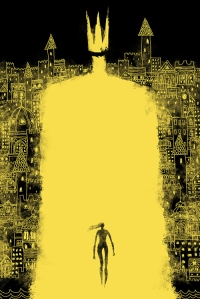 P: Do you have any artistic influences?
P: Do you have any artistic influences?
J: So many it is hard to remember them all. And as I grow older I find that they change and evolve, so that something that I loved when I was younger now fades to be replaced with something I used to feel nothing for. The names that pop into my head now: Rembrandt, Anthony Van Dyck, George Inness, John Harris, Victor Ambrus, Taiyo Matsumoto, Sergio Toppi, Lorenzo Mattotti, Hugo Pratt, Jacques Tardi, George Pratt, Mark English, Nicholas De Crecy, Velazquez, Leonard Baskin, Mike Mignola, Jose Munoz, Edward Kinsella, Leslie Herman, Andrew R. Wright, Josh George, Sterling Hundley, Moebius, Rodin, Schiele, Klimt, Andrew Wyeth, Lucian Freud, Bill Carman, Henry Moore, on and on and on…
–
P: Do you have a dream project?
J: My dream is to write and draw my own books and graphic novels. I’m currently finishing my first illustrated book that I am writing as well, and have two graphic novels in various stages to finish after that is done. I’ve found a publisher, so my dream seems a little closer to reality.
–
P: What sort of fiction do you enjoy personally?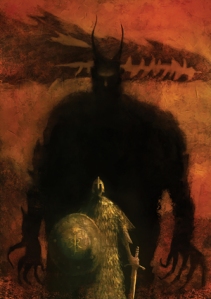
J: I love all sorts. Much like the list of artistic influences, my reading is wide and varied. Some favorites: Gene Wolfe, Eiji Yoshikawa, Robert Holdstock, Frank Herbert, Martin Cruz Smith, Derek Raymond, Raymond Chandler, James Ellroy, Joe Abercrombie, Iain M. Banks, Ray Bradbury, Robert Graves, M. John Harrison, Ernest Hemingway, Peter Higgins, J. Robert Janes, John Le Carre, Graham Greene, Hilary Mantel, Cormac McCarthy, China Mieville, K. J. Parker, David Peace, Jo Nesbo, Jeff Vandermeer, Bruno Schulz, Daniel Woodrell, Italo Calvino, Dorothy Dunnett, William Gibson, Max Gladstone… I’m currently reading the Sharpe series by Bernard Cornwell.
–
P: In terms of visuals are there any film directors that you admire?
J: For three years in college I was a film major before switching to fiction, so film has had a great influence on me and I continue to study it and often do drawing studies from films I enjoy (later today I’m going to draw from Stanley Kubrick’s “Paths of Glory” which I watched yesterday.) Sergio Leone, Federico Fellini, Hitchcock, Kubrick, John Ford, Masaki Kobayashi, Ingmar Bergman, Terry Gilliam, Andrei Tarkovsky, Andrew Dominik, Steven Soderbergh, Akira Kurosawa, Orson Welles – there’s not enough time to watch all the great movies I would like to and study them.
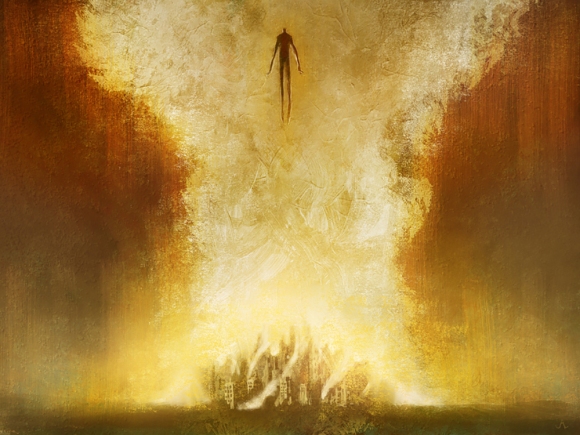
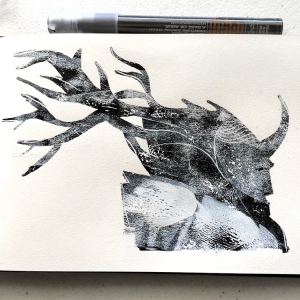 P: Can you talk about what you’re currently working on?
P: Can you talk about what you’re currently working on?
J: There are a few projects I can’t talk about (but oh how I hope that I am able to sometime soon), a few book covers, my illustrated book, the layouts for a short graphic novel, and the script for a much longer graphic novel.
–
P:Lastly, thank you for what you did with “Fabulous Beasts”. It’s tremendous.
J: It was my pleasure – I was thrilled to get to work with you.
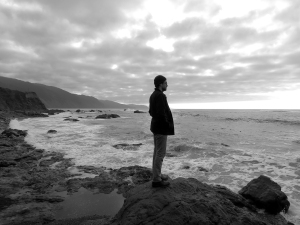 Jeffrey is a prize winner illustrator whose client list includes Gollancz, Tor.com, Scholastic, HarperCollins, TIME, The New Yorker, The New York Times, Solaris Books, Science Fiction Book Club, Jurassic London, Nautilus, Wall Street Journal, Washington Post and Scientific American, to name a few.
Jeffrey is a prize winner illustrator whose client list includes Gollancz, Tor.com, Scholastic, HarperCollins, TIME, The New Yorker, The New York Times, Solaris Books, Science Fiction Book Club, Jurassic London, Nautilus, Wall Street Journal, Washington Post and Scientific American, to name a few.
His accolades include:
• Gold Medal (Books), Society of Illustrators 56
• Academy of British Cover Design Award (Best Series Design with Nick May/Gollancz)
• Academy of British Cover Design Award (Best Science-Fiction/Fantasy with Nick May/Gollancz)
• Nominated for World Fantasy Award – Best Artist (2015), BSFA (British Science Fiction Association) Award for Best Artwork (2014) , Spectrum Award (Books, 2014), Spectrum Award (Institutional, 2014)
Jeffrey’s website
Jeffrey on Twitter
Jeffrey on Tumblr
Jeffrey on Drawger















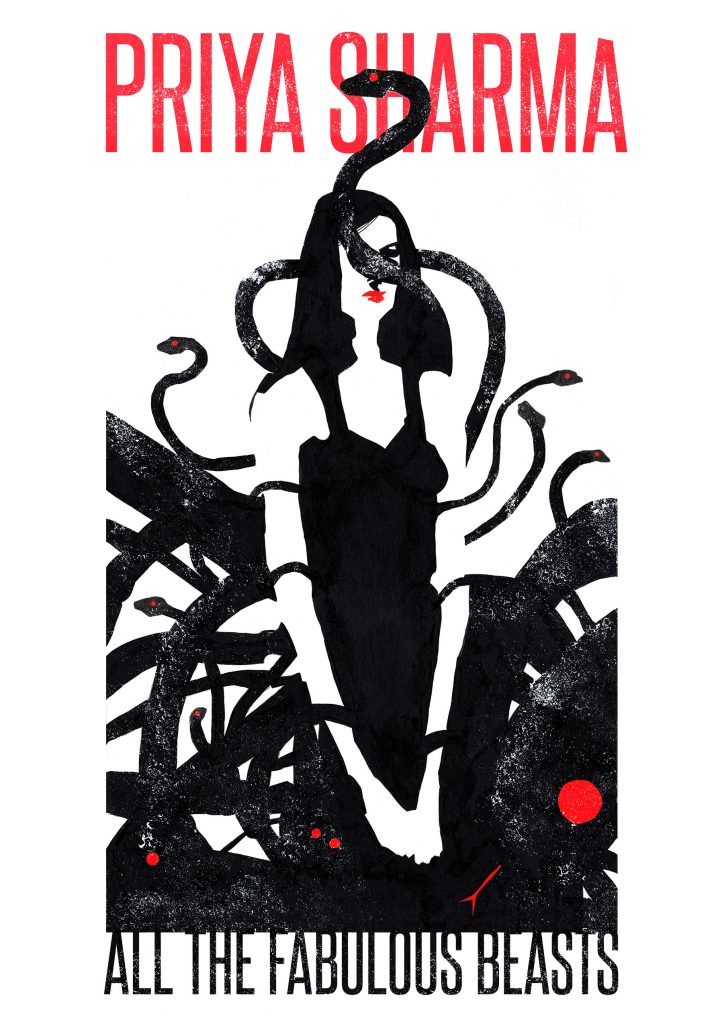
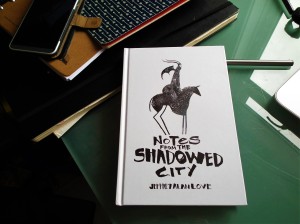 I’ve read it several times now and each pass gives me a different experience. I become the journeyman and what I take from it depends on what I bring to it. It’s a demanding book that requires a different type of interaction to the traditional narrative. Each spread is an image partnered with a line or two of intriguing text, which gives the reader space to fill in the gaps and it gives the whole project a dream-like feel.
I’ve read it several times now and each pass gives me a different experience. I become the journeyman and what I take from it depends on what I bring to it. It’s a demanding book that requires a different type of interaction to the traditional narrative. Each spread is an image partnered with a line or two of intriguing text, which gives the reader space to fill in the gaps and it gives the whole project a dream-like feel.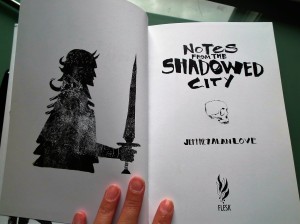 I’ve interviewed Mr Love before (here) and as a fan I wanted to ask him more about the book.
I’ve interviewed Mr Love before (here) and as a fan I wanted to ask him more about the book.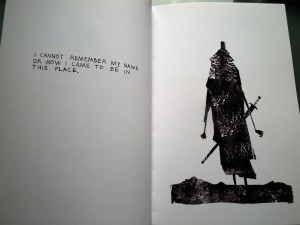 P: Tell me about your protagonist. Why did you make him an amnesiac?
P: Tell me about your protagonist. Why did you make him an amnesiac?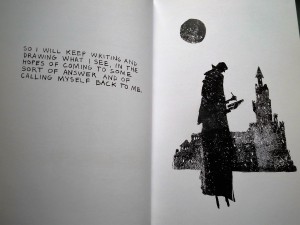 case, they open it and then compulsively turn the pages, usually until the end. It’s fascinating to watch. I think there’s something about the stripped back quality and the imagery that’s very compelling. How did you settle on the balance between text and image? Have you written a longer text to go with this?
case, they open it and then compulsively turn the pages, usually until the end. It’s fascinating to watch. I think there’s something about the stripped back quality and the imagery that’s very compelling. How did you settle on the balance between text and image? Have you written a longer text to go with this?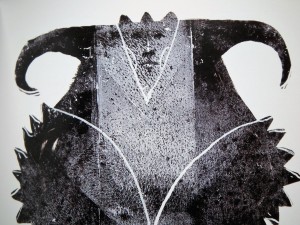 P: I’m interested in the proliferation in hand lettering and font development in recent years. Your use of handwritten text is lovely and completely in keeping with the concept of this being a notebook. Did you develop a font for this?
P: I’m interested in the proliferation in hand lettering and font development in recent years. Your use of handwritten text is lovely and completely in keeping with the concept of this being a notebook. Did you develop a font for this? black/white is the direction my sketchbook has taken in the past few years. But I also really love black and white art. In today’s photoshop era where every single color is easily available to the illustrator one way to stand out is to step away from color. But it also comes back to the question I always ask myself: “how much information is enough?” There is also a sense of timelessness with black/white, a seriousness or starkness that I think works well with what I do, which is find the silhouette that most effectively tells the story I want it to. I like that my work can feel like sculpture at times, hewn from ancient rock.
black/white is the direction my sketchbook has taken in the past few years. But I also really love black and white art. In today’s photoshop era where every single color is easily available to the illustrator one way to stand out is to step away from color. But it also comes back to the question I always ask myself: “how much information is enough?” There is also a sense of timelessness with black/white, a seriousness or starkness that I think works well with what I do, which is find the silhouette that most effectively tells the story I want it to. I like that my work can feel like sculpture at times, hewn from ancient rock.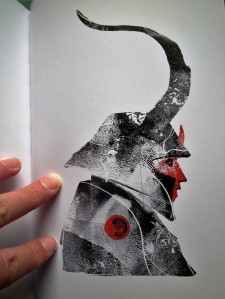 about the female characters in the fantasy books written by men, telling me how they could have been better, stronger, more interesting. Indirectly she guided the creation of that character. Also I often try with my work to turn stereotypes on their head. They give me something to fight against. The stereotype in fantasy is the princess as the love interest, but if a woman happens to be a warrior she’s wearing a chainmail bikini, she’s an object of beauty – here I completely wrapped her in mystery, in shadow, and what he loves is not her looks but her actions, her strength, her ease and absolute mastery of this strange world that seems to escape his grasp. Which seems to describe my relationship to the real world, and the things I love about my wife.
about the female characters in the fantasy books written by men, telling me how they could have been better, stronger, more interesting. Indirectly she guided the creation of that character. Also I often try with my work to turn stereotypes on their head. They give me something to fight against. The stereotype in fantasy is the princess as the love interest, but if a woman happens to be a warrior she’s wearing a chainmail bikini, she’s an object of beauty – here I completely wrapped her in mystery, in shadow, and what he loves is not her looks but her actions, her strength, her ease and absolute mastery of this strange world that seems to escape his grasp. Which seems to describe my relationship to the real world, and the things I love about my wife.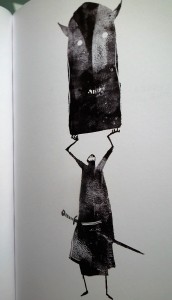 J: I think that was inspired by M. John Harrison’s Viriconium novels and Swordspoint by Ellen Kushner. Bringing those small moments into it, real life. Also making fun of myself and my work. Everything doesn’t have to be serious, or epic, and what there is that is epic can also be made fun of. Masked swordsmen is “cool” but it’s also kind of ridiculous – I wonder how well someone could fight with a sword with a giant homemade mask on top of their head?
J: I think that was inspired by M. John Harrison’s Viriconium novels and Swordspoint by Ellen Kushner. Bringing those small moments into it, real life. Also making fun of myself and my work. Everything doesn’t have to be serious, or epic, and what there is that is epic can also be made fun of. Masked swordsmen is “cool” but it’s also kind of ridiculous – I wonder how well someone could fight with a sword with a giant homemade mask on top of their head?